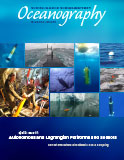First Paragraph
Ocean turbulence is inherently episodic and patchy. It is the primary mechanism that transforms water mass properties and drives the exchanges of heat, freshwater, and momentum across the water column. Given its episodic nature, capturing the net impact of turbulence via direct measurements requires sustained observations over extended temporal and/or broad spatial scales.

